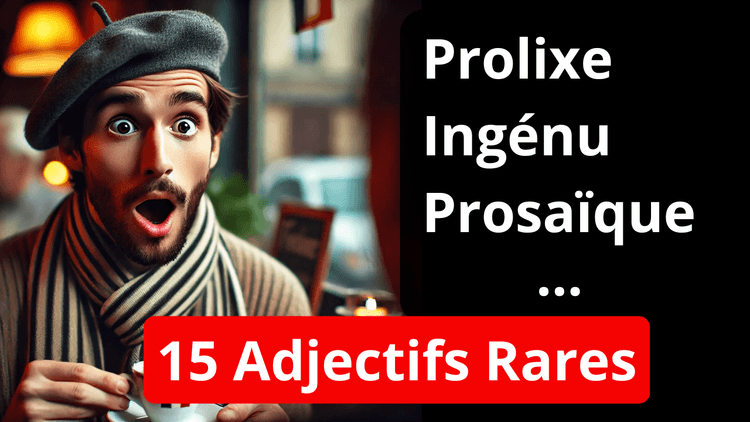Mastering Direct and Indirect Object Pronouns in French: A Comprehensive Guide
Difficulty:A2
-
January 10, 2024
1/10/2024
Allez, bien le bonjour tout le monde! Today, we are going to explore an essential aspect of French grammar: the pronouns COD (Complément d'Objet Direct) and COI (Complément d'Objet Indirect), such as "le", "la", "les", "lui", and "leur". If these terms seem a bit intimidating, don't panic! We're going to dissect them together, in a simple and fun way, to fully understand their role and use. Ready for a 10-minute session full of discovery? Let's go, but let's start first with a small reminder about the structure of the sentence.
Understanding the Sentence Structure
Before diving into the heart of the matter, let's make a small reminder about the sentence structure. A basic sentence is generally made up of a subject (the one who performs the action), a verb (the action itself), and a grammatical object, also known as object complement. Let's take a simple example :
Je mange une pomme.
In this sentence, "Je" is the subject, "mange" is the verb, and "une pomme" is the object. The object is directly linked to the verb and answers the question "Je mange quoi ? Je mange une pomme."
It is this interaction between the verb and the object that will particularly interest us, especially when considering that there are different types of objects: direct and indirect. So, let's keep this basic structure in mind as we explore these concepts more in detail.
Direct and Indirect Objects
In this part, we are going to discuss the direct and indirect objects in sentence structure. Let's start by understanding what direct objects are. A direct object directly answers the question "what?" or "who?" without using a preposition (à, de...).
Je vois Nicolas.
In this sentence, "Nicolas" is the direct object because it immediately follows the verb without a preposition. It answers the question: Je vois qui ? Je vois Nicolas.
On the other hand, indirect objects are introduced by a preposition, typically "à" or "de". They answer questions like "To whom?" or "About what?".
Je téléphone à Nicolas.
Here, "à Nicolas" becomes ,an indirect object because of the presence of the preposition "à".

The key to distinguishing between a direct and indirect object is the presence or absence of a preposition. This directly influences the sentence's construction and the choice of pronouns. If the complement answers the question "what?" (quoi ?) or "who?" (qui ?), it is a direct object. If it answers the question "to/from who?" or "to/from what?", it is an indirect object
Identifying Direct and Indirect Verbs
In this section, we focus on the distinction between direct and indirect verbs. This is an important aspect to understand the correct usage of direct and indirect objects. A direct verb does not need a preposition to connect to its object, while an indirect verb is always associated with a preposition like "à" or "de".
In "Je vois Nicolas", "vois" is a direct verb because it connects directly to "Nicolas" without a preposition. In comparison, "Je téléphone à Nicolas" uses "téléphone", an indirect verb, because it is linked to "Nicolas" by the preposition "à".
It is sometimes challenging to know whether a verb is direct or indirect, especially in French where many verbs can be used in both forms. The best way to find out is to practice and familiarise yourself with common examples.

To identify whether a verb is direct or indirect, ask yourself the question: is there a preposition between the verb and its object? If the answer is yes, then it is an indirect verb.
The COD and COI Pronouns for je, tu, il, ils
Let's now tackle a crucial aspect of our topic: the pronouns COD (Complément d'Objet Direct) and COI (Complément d'Objet Indirect) for the subjects "je", "tu", "il", and "ils". These pronouns replace direct and indirect objects to avoid repetition and fluidize our sentences.
COD Pronouns
COD pronouns replace direct objects. For "je", "tu", "nous", and "vous", the COD pronouns are respectively "me", "te", "nous", and "vous".
"Il connaît Nicolas" devient "Il le connaît" où "le" remplace "Nicolas".
For the third person, use "le", "la", and "les" for the masculine, feminine, and plurals respectively.
"Il connaît les règles du jeu" devient "Il les connaît" où "les" remplace "les règles du jeu".
COI Pronouns
COI pronouns, on the other hand, replace objects introduced by a preposition. For "je", "tu", "nous", and "vous", the COI pronouns are identical to the CODs: "me", "te", "nous", et "vous".
Dans "Je parle à Marie", "Marie" est remplacé par "lui" dans "Je lui parle".
For the third person, we use "lui" in the singular and "leur" in the plural.
Dans "Tu demanderas à ses parents", "à ses parents" est remplacé par "leur" dans "Tu leur demanderas".

The key to using these pronouns correctly is to remember that CODs replace objects without a preposition, while COIs replace those introduced by a preposition. The forms vary depending on the subject of the sentence.
A bit of training?
Loading...
Conclusion
Here we are at the end of our exploration of COD (Direct Object Complement) and COI (Indirect Object Complement) pronouns in French. These concepts, although sometimes complex, are essential for mastering the French language.
For those who would like to deepen their understanding and practice of COD and COI pronouns even further, we have prepared a summary PDF.
This session was a small step in the vast and rich universe of French grammar. Don't worry if everything is not yet clear or automatic; practice is the path to mastery. Don't hesitate to consult our blog and our videos where you will find other exciting topics!
And if you want to progress quickly and give yourself every chance of success, discover our video courses on Udemy. They are designed to accompany you step by step in your learning, with clear explanations and practical exercises. Take a big step forward in your mastery of the French language!
Bonne journée et bon apprentissage !

Subscribe to our newsletter
Latest posts
Browse all posts
Subscribe to our newsletter
Stay informed and get a free video

